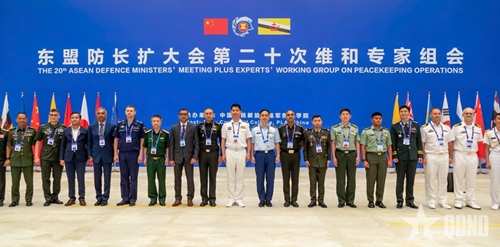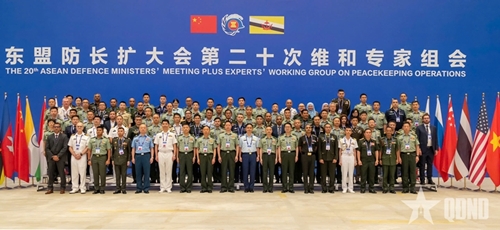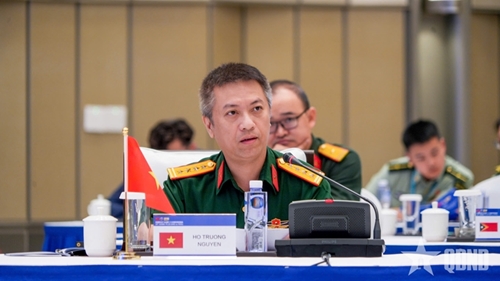Themed “Technology and innovation: Enhancing military cooperation in U.N. peacekeeping operations,” the event saw the participation of experts from 10 ASEAN countries and observer states of the ADMM+ (the U.S., Japan, the RoK, India, New Zealand, Australia, and Russia); U.N. experts and representatives from the ASEAN Secretariat.
    |
 |
|
Representatives of participating countries in a joint photo |
During the meeting, representatives from Vietnam, participating countries, and international organizations contributed to discussions on the following topics: use of UAVs and preventive measures in U.N. peacekeeping operations; application of AI in U.N. peacekeeping operations; and application of new technologies and techniques to enhancing security and safety in U.N. peacekeeping operations.
The delegates also underlined the significance of deploying appropriate technologies, respecting the sovereignty of host nations, enhancing safety, and improving the efficiency of missions.
    |
 |
|
Experts from ASEAN countries and observer states of the ADMM+ |
Discussing the topic "Application of new technologies and techniques for security and safety in U.N. peacekeeping operations," Senior Colonel Ho Truong Nguyen, Head of the International Cooperation Division of the Vietnam Department of Peacekeeping Operations, emphasized that the effectiveness of technology application in the field depends on its adaptability to real conditions. Many missions operate in remote areas with limited infrastructure. Therefore, it is essential to ensure technologies suited to the conditions on the field; train peacekeepers to operate these technologies effectively; and ensure compatibility of these technologies with existing platforms used in the missions.
    |
 |
|
Sr. Col. Ho Truong Nguyen speaks at the event. |
Col. Nguyen added that although Vietnam is a relatively new participant in U.N. peacekeeping operations, the country has actively applied technology in its task implementation. The Level-2 Field Hospital in South Sudan has pioneered the use of telemedicine for remote medical consultations, solar energy for preserving medical supplies, and electronic medical record management. Moreover, Vietnam's engineering units have utilized UAVs for mapping to support demining, road construction, and infrastructure repair planning.
Translated by Quynh Oanh